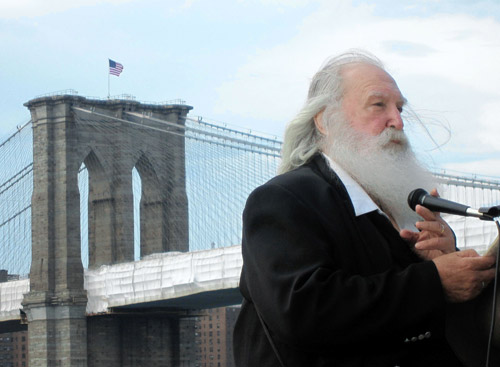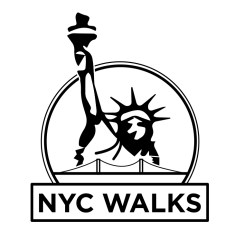Walt Whitman and the Brooklyn Bridge

“Silence and Denial: Walt Whitman and the Brooklyn Bridge” by Arthur Geffen
“THE RECENT CENTENNIAL of the Brooklyn Bridge has occasioned a small spate of journalistic legends about Walt Whitman’s reaction to what could be fairly described as the greatest technological achievement in late nineteenth-century America.”
“The two short references he did make suggest the enormous potential attraction of the bridge for him. ‘ In his 1876 revision of “Song of the Exposition,” confidently assuming the completion of the bridge, he places it in seventh and final position in a series of magnificent modern engineering feats which unify the world through communication and transportation: 1 These triumphs of our time, the Atlantic’s delicate cable, The Pacific railroad, the Suez canal, the Mont Cenis and Gothard and Hoosac tunnels, the Brooklyn Bridge, This earth all spann’d with iron rails, with lines of steamships threading every sea, Our own rondure, the current globe I bring. (11. 162-1
Here Whitman obviously repeated some of the principal ideas he had set forth in “Passage to India” (1871), notably his fervent belief that technological progress presages even greater human and spiritual advancement. Therefore it is not surprising that the first three items in the series quoted here are the central accomplishments celebrated in the earlier poem. In 1871 he had invested the Suez Canal, Atlantic Cable, and transcontinental railroad with enormous significance; in late 1875 or early 1876 when he revised “Exposition,” he apparently saw the completion of the bridge as an even more powerful event in the march of progress. 5 Whitman’s final mention of the bridge appears in a vivid description of New York harbor which he wrote as a newspaper article (originally published on 4 July 1878) and later incorporated into Specimen Days (1882) under the title “Manhattan from the Bay.”6 Here he presents the harbor from the vantage point of a ship cruising through the exciting river and bay traffic: “-to the right the East river-the mast hemm’d shores-the grand obelisk-like towers of the bridge, one on either side, in haze, yet plainly defin’d, giant brothers twain, throwing free graceful interlinking loops high across the tumbled tumultuous river below” (p. 170).7 By 1878 then, the bridge had entered Whitman’s visual consciousness as a striking part of what was for him almost a holy place, a location he had glorified in one of his finest early poems – “Crossing Brooklyn Ferry” (1856). Why, one wonders, should he have neglected something as poetically potent as this?”
You will have to read the rest of the essay to find out. “Silence and Denial: Walt Whitman and the Brooklyn Bridge” by Arthur Geffen, Walt Whitman Quarterly Review (Vo. 1, No. 4, 1983), pages 1-11
https://ir.uiowa.edu/cgi/viewcontent.cgi?article=1042&context=wwqr
NYC Walks Blog 42 Walt Whitman and the Brooklyn Bridge
